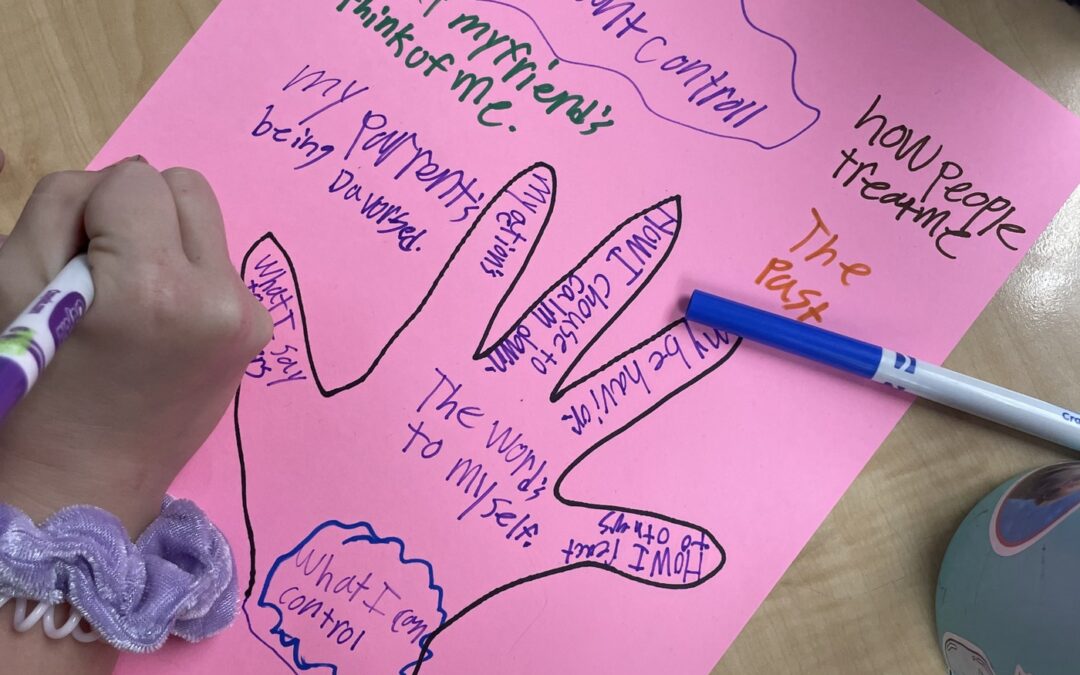Andree Grey, Superintendent, Encinitas Union School District (Encinitas, California)
Throughout the upcoming months, we will be running a Q&A blog series that features GSNN partners describing best practices and lessons learned on topics tied to each of the impact systems in the GreenPrint. Q&As for May and June focus on the Climate and Culture system.
This is the fourth blog in the series.
What does a holistic approach to wellness mean for Encinitas Union School District?
Encinitas Union School District (EUSD) has a long history of valuing health and wellness for students and staff. Not only is health and wellness one of the district’s pillars, it’s also one of five consistent goals in our Local Control Accountability Plan/Strategic plan. In alignment with Green Schools National Network’s GreenPrint, we value healthy minds and bodies with a focus on equity and sustainability. We believe all systems and structures must support the whole child. Our program goals for health and wellness center on providing students with techniques, habits, and training to promote lifelong health and wellness. These focus areas are implemented through activities ON the Mat, THROUGH my Actions, OUT in the Garden, and IN the Kitchen. Learn more about our health and wellness program.
Describe some of the student wellness and mindfulness programs that EUSD offers. How are they having a positive impact on students?
Our ON the Mat program helps students focus, move, and relax. Students learn how to connect their breath to movement and increase their ability to self-manage through weekly yoga sessions. Specific data collected at the program’s onset noted an improvement in self-regulation skills for students who started with lower than typical skills. Teachers currently report benefits such as increased focus after yoga sessions and use of a universal language around breathing and self-regulation strategies.
Our THROUGH my Actions program is organized around questions of inquiry that support character development. Each session starts with a question of inquiry to help students make connections to EUSD’s World Ready Traits and Skills and social-emotional learning (SEL) program (discussed in more detail below). One example is when students learn about the trait of altruism. They learn the definition and discuss the poem Ripples of Kindness. They discuss connections between ripples of water and kindness. Students then model the ripple effect with yoga movements like “the wave” sequence and chart ways they can create a ripple effect with kindness by demonstrating altruism. The explicit teaching of traits and skills has resulted in over 90% percent of students reporting on the California Healthy Kids Survey that their teachers have taught them how to treat others with respect and to feel responsible for their actions.
Our IN the Kitchen program helps students expand their nutritional knowledge and develop skills to lead a healthy lifestyle. EUSD proudly holds the honor of having the first California Certified Organic Farmers-certified organic farm owned by a public school district in the nation. We supply over 12,000 pounds of organic produce annually for salad bars and scratch-made lunch items at all nine of our schools. Our students are actively engaged in our lunch program through farm to school. With funding from a grant, student ambassadors reviewed lunch requirements and our current crop plan, surveyed their peers, and created recipes to support increased participation in school-provided lunch. The student-created recipes immediately sold out! We have seen lunch participation nearly double over the last two years. You can learn more about our farm-to-school program here.
Our OUT in the Garden program takes students out into our outdoor classrooms to deepen their understanding of lessons learned in the classroom, develop life skills, participate in science experiments, and take part in growing (and tasting!) a wide array of healthful food choices. All nine of our schools have gardens and we have one school farm and one district farm. Our Farm Lab offers the perfect backdrop for place-based learning. For example, first graders learn about pests and how they impact our food supply. They see the produce that is grown for their lunches and talk with experts about pest problems and organic farming. The students then use their understanding of pest management to program an Ozbot (a small codable robot) in a pattern that will deter critters. They present their strategy and test their products to replicate how they might reduce food loss.
Another example is our student-run farm stand. Each week students from Flora Vista Elementary School collect and determine produce to be sold after school. The students set up the stand and execute the advertising needed to make a successful business. They use a pay-as-you-can method and collections have far exceeded market value!
How does EUSD support wellness and a positive work/life balance for its teachers and staff?
Our Wellbeing Committee strategically made plans this year to target the needs of staff knowing the tremendous challenges faced by employees throughout the pandemic. It Starts with Us is our theme this year. This is inclusive of taking care of ourselves and one another. The committee started Wellness Wednesdays which have included things like short emails with information regarding wellness practices, healthy snack baskets placed in the lounge, and positive activities done in staff meetings or lounges. We also instituted districtwide staff yoga sessions and even have a site that hosts Pickleball tournaments after school on Wednesdays.
EUSD also pushed out a signature line for employees to use noting the importance of work/life balance and stating that emails would be responded to during work hours. Our principals and managers also made commitments not to email or text outside of work hours unless it’s an emergency.
What are some of the practices that EUSD uses to help students build resilience and cope with trauma and stress?
 At EUSD, we put in place a multi-tiered system of support to provide different levels of strategic assistance for students. Our Tier 1 program includes our SEL program called T.R.A.C., which stands for Teambuilding, Regulation, Awareness, and Community. These concepts are based on the Collaborative for Social and Emotional Learning’s core competencies: self-awareness, self-management, social awareness, relationship skills, and responsible decision-making. Lessons are taught by designated teachers and are dynamic and tailored to the population of each school site. Students who need additional Tier 2 support to enhance their SEL skills participate in small group sessions with the T.R.A.C. teacher or in a pullout group with one of our district counselors. Tier 3 support is provided by counselors, psychologists, or learning specialists.
At EUSD, we put in place a multi-tiered system of support to provide different levels of strategic assistance for students. Our Tier 1 program includes our SEL program called T.R.A.C., which stands for Teambuilding, Regulation, Awareness, and Community. These concepts are based on the Collaborative for Social and Emotional Learning’s core competencies: self-awareness, self-management, social awareness, relationship skills, and responsible decision-making. Lessons are taught by designated teachers and are dynamic and tailored to the population of each school site. Students who need additional Tier 2 support to enhance their SEL skills participate in small group sessions with the T.R.A.C. teacher or in a pullout group with one of our district counselors. Tier 3 support is provided by counselors, psychologists, or learning specialists.
An example of a T.R.A.C. lesson in self-awareness and self-management involves students learning about the prefrontal cortex (PFC – our wise owl), hippocampus (memory saver elephant), and amygdala (our guard dog) and how they play a role in thinking and feeling. When our amygdala senses danger it takes control, we flip our lid, and we lose control of our PFC (thinking brain). This is why we are unable to make smart decisions and think properly when we experience a big emotion, and our brain thinks we are in danger. This leads to a discussion of coping skills and how we can prevent ourselves from “flipping our lid” or how to get our wise owl PFC back in charge.
What kinds of support does EUSD offer its teachers to help them teach and model wellness practices for their students?
We focus on Tier 1 instruction as part of our EUSD multi-tiered system of support. This requires us to equip teachers with the skills to support our students in developing health and wellness practices. Teachers have access to on-site resources, including a full-time school psychologist, part-time counselors, itinerant behavior specialists, and the site-assigned T.R.A.C. teacher.
All students complete the PASS universal screener twice yearly to help teachers know their students and needs. Classroom teachers participate side-by-side with their students in T.R.A.C. lessons led by T.R.A.C. teachers. We have also completed training for teachers in areas such as trauma-informed care practices, creating a positive classroom culture, SEL and well-being, gender diversity, and equity.

